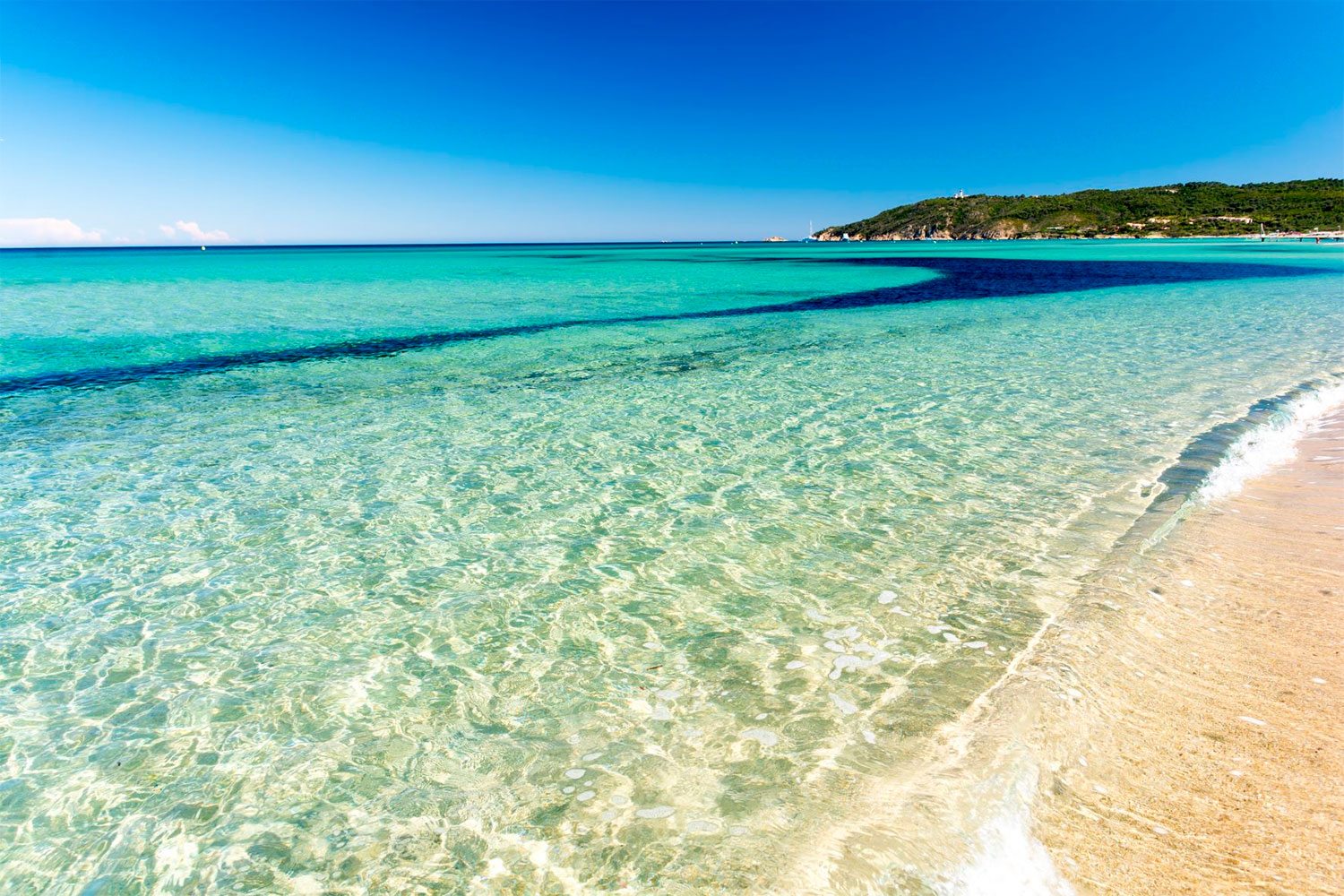Discover the 19 best beaches in the South of France, from Corsica to the Côte d’Azur, with detailed travel tips, locations, and highlights.
The South of France offers some of the most scenic beaches in Europe, from the turquoise coves of Corsica to the elegant stretches along the Côte d’Azur. This guide presents 19 unique beaches, each with a detailed 180-word description covering location, accessibility, and why each beach stands out.

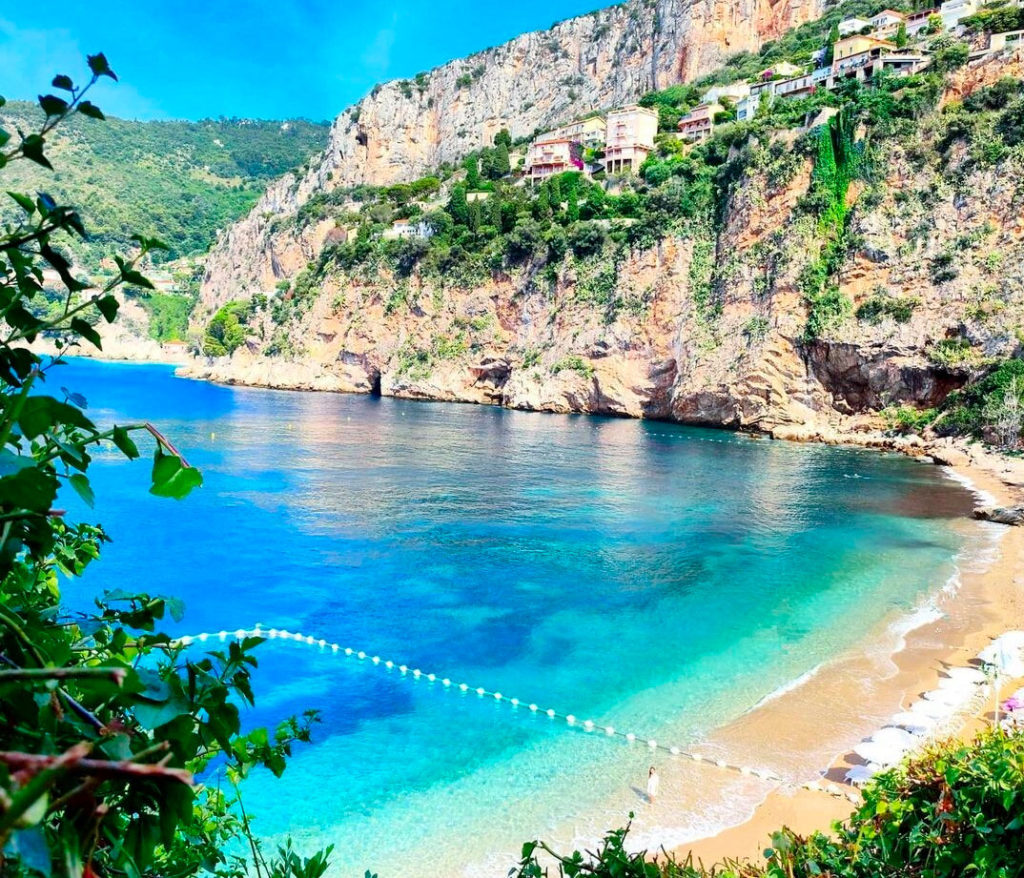
1. Plage de Palombaggia, Corsica
Located near Porto-Vecchio in southern Corsica, Plage de Palombaggia is known for its fine white sand, pink granite rocks, and pine groves that provide natural shade. Its shallow turquoise waters are ideal for swimming, especially with children. Snorkelers enjoy exploring small coves with clear visibility. The beach is about 20 minutes by car from Porto-Vecchio, with several car parks available nearby, though they fill quickly in summer. There are beachside cafes, sunbed rentals, and kayak hire. Protected from strong winds, the beach maintains calm conditions most days. Due to its scenic beauty and family-friendly appeal, it gets busy in July and August, so early morning visits or off-season trips (June or September) are ideal. Its balance of accessibility, services, and natural charm make Palombaggia one of Corsica’s most iconic coastal spots.
2. Plage de l’Espiguette, Languedoc
Located near Le Grau-du-Roi and about 35 kilometers from Montpellier, Plage de l’Espiguette is a 10-kilometer stretch of wild dunes and soft, pale sand. It is part of a protected natural reserve, bordered by salt marshes and lagoons, offering an untamed coastal experience. The area is popular with kitesurfers and naturists, thanks to steady winds and a long-standing naturist section. The beach is accessible by car, with a large parking area close to the entrance. There are few permanent facilities—only seasonal refreshment kiosks and mobile toilets—so visitors should come prepared. It’s ideal for those looking to escape the crowds of the Riviera. Despite its isolation, it remains safe and well-regarded for families due to the gently sloping shore. There is also a lifeguarded zone in summer. The expansive horizon and lack of urban development make it one of the best spots in southern France for photography and sunsets.
3. Plage de la Mala, Cap d’Ail
Tucked beneath steep cliffs near Monaco, Plage de la Mala is one of the most secluded beaches along the Côte d’Azur. It lies at the base of Cap d’Ail and is accessible only by foot—either via a coastal path or down a series of steps from the Sentier du Littoral. The effort required to reach it preserves its tranquility. The beach consists of fine pebbles and soft sand, with clear aquamarine water that’s perfect for swimming and snorkeling. Two private beach clubs offer sunbeds, meals, and cocktails, while a small public area remains accessible to all. The backdrop of cliffs and pines gives the cove an intimate atmosphere rarely found on the Riviera. The beach is about 15 minutes by foot from Cap d’Ail train station. It can get busy in summer, especially on weekends, but early mornings remain peaceful. Due to its location and limited space, it’s recommended to bring minimal belongings. Plage de la Mala is a favorite among locals and Monaco visitors looking for a chic yet hidden retreat.
4. Plage des Marinières, Villefranche-sur-Mer
Located in a scenic bay just east of Nice, Plage des Marinières lies at the foot of the colorful old town of Villefranche-sur-Mer. The beach is pebbly, typical of the French Riviera, but the calm, shallow waters make it excellent for families and relaxed swimmers. The backdrop of pastel houses climbing the hillside adds unique charm. Easily accessible by train—the Villefranche-sur-Mer station is directly behind the beach—this location is also walkable from the harbor. It offers both public and private sections with beach chairs, showers, and small snack bars. The promenade behind the beach includes a few restaurants and convenience stores. While the area is well-developed, it never feels overly commercial. The water here is notably clean, and local authorities maintain the beach regularly. In summer, lifeguards are present, and paddleboards or kayaks are available for rent. This beach combines proximity to urban comforts with scenic appeal, making it one of the best options for visitors staying in or near Nice.
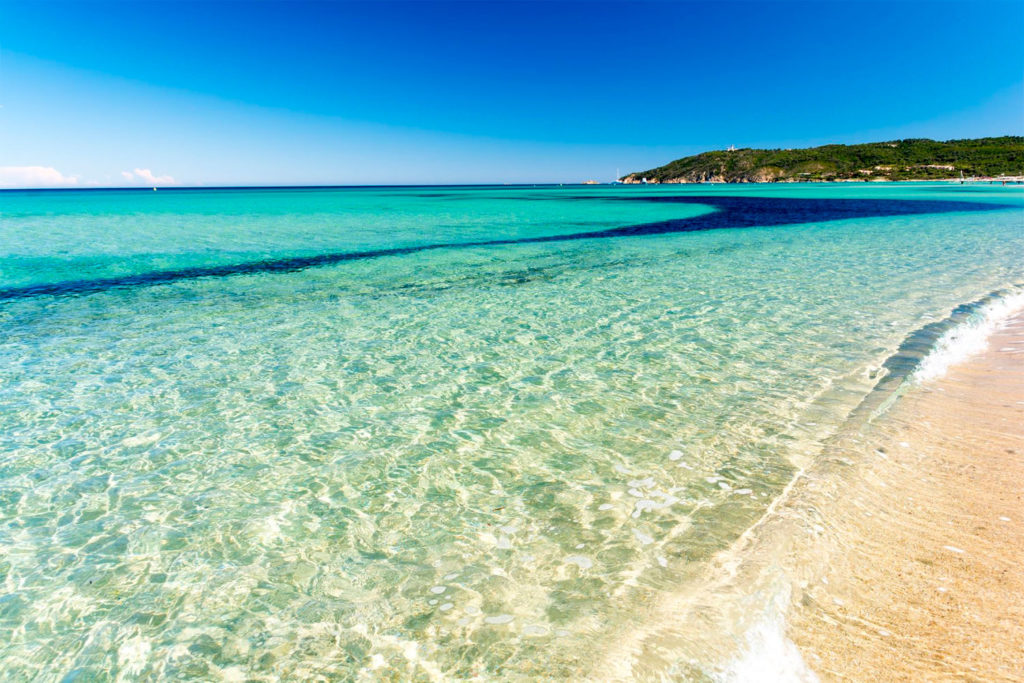
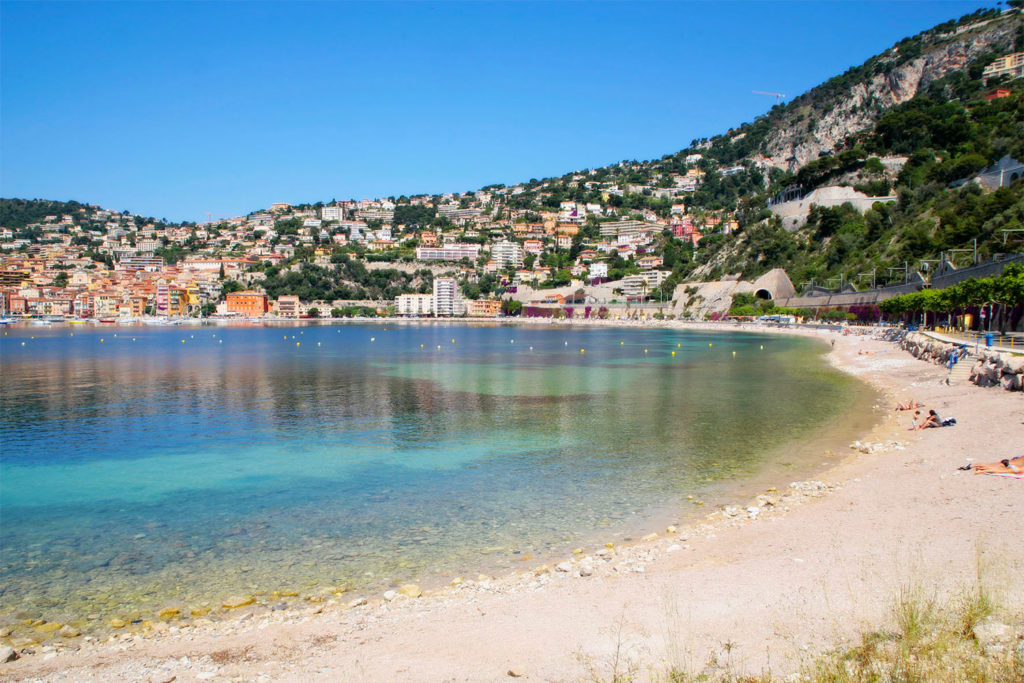
5. Plage de Pampelonne, Saint-Tropez
Plage de Pampelonne stretches for over five kilometers along the coast near Saint-Tropez and the village of Ramatuelle. It’s the most famous beach in the area, known for its mix of public zones and glamorous private clubs such as Club 55 and Nikki Beach. The sand is soft and golden, and the sea remains clear and swimmable through the warmer months. Pampelonne gained international fame in the 1950s with Brigitte Bardot and continues to attract celebrities and yacht owners. Despite its status, it also accommodates casual visitors, families, and sunbathers seeking quieter spots along the shoreline. Restaurants, restrooms, showers, and water sports rentals are widely available. There are multiple access points with paid parking lots, though traffic can be heavy in peak season. Off-season visits in late spring or early autumn offer a more relaxed experience. With scenic views, vibrant atmosphere, and excellent facilities, Pampelonne captures both the luxury and freedom of the French Riviera. It remains an essential stop for anyone wanting to experience the region’s iconic beach culture.
6. Plage de la Baie des Milliardaires, Antibes
Also known as Billionaires’ Bay, this hidden beach lies at the end of a coastal path on Cap d’Antibes. Enclosed by lush vegetation and majestic villas, it offers a peaceful escape from the busy Riviera. The beach is small and pebbly, with clear waters ideal for swimming and snorkeling. Access is via a walking trail called the Sentier du Littoral, which runs from the Villa Eilenroc to the cove. There is no direct road or parking, which limits the number of daily visitors and preserves the serene environment. There are no facilities—no restrooms, sunbeds, or cafés—so visitors must bring their own supplies. The quiet, pristine water and scenic views of luxury yachts in the bay make it a favorite among locals and photographers. The name comes from the nearby estates belonging to ultra-wealthy individuals, but the beach remains open to the public. For those seeking a natural, off-the-radar location with a hint of Riviera mystique, this spot is unmatched in charm and exclusivity.
7. Plage Notre-Dame, Porquerolles
Located on Île de Porquerolles, part of the Hyères Islands off the Var coast, Plage Notre-Dame is often named among the most beautiful beaches in Europe. It is reachable by a 10-minute ferry from Hyères and then a 30-minute walk or bike ride through pine forests and vineyards. This white-sand beach is set within a protected national park and surrounded by eucalyptus and oak trees. Motor vehicles are not allowed on the island, preserving the peaceful, unspoiled atmosphere. The sea is calm and shallow, with crystal-clear water ideal for swimming and snorkeling. There are no shops or restaurants directly on the beach, which adds to its natural charm. Visitors can rent bikes from the port or take a small electric shuttle. The best time to visit is in June or September, when the island is less crowded. A UNESCO-listed conservation area, Porquerolles represents the perfect blend of sustainability and natural beauty, with Plage Notre-Dame as its crown jewel.
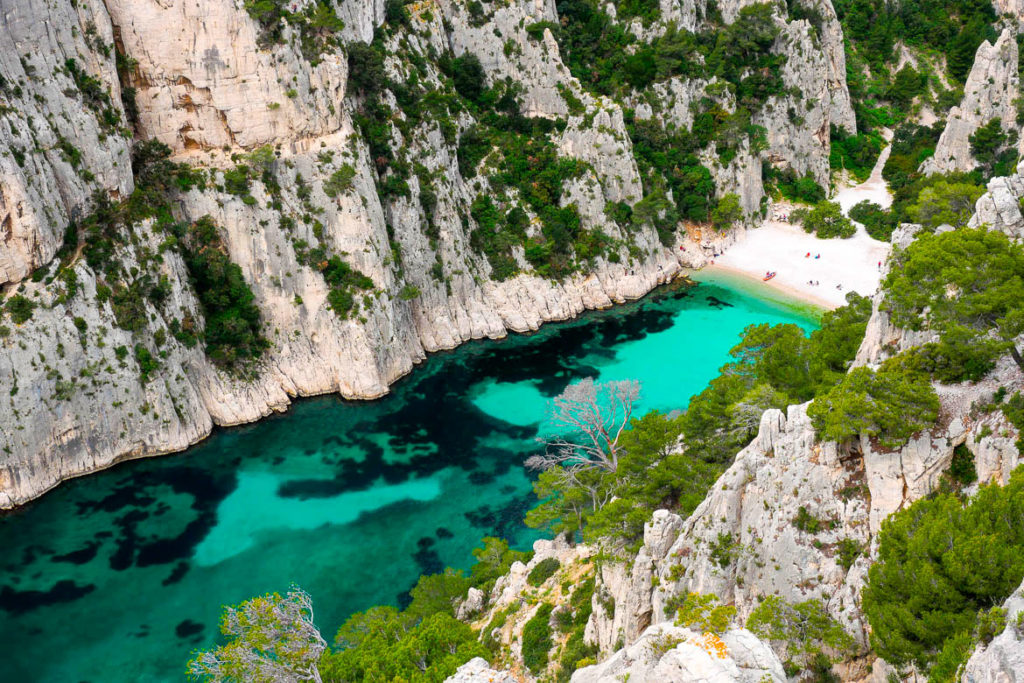
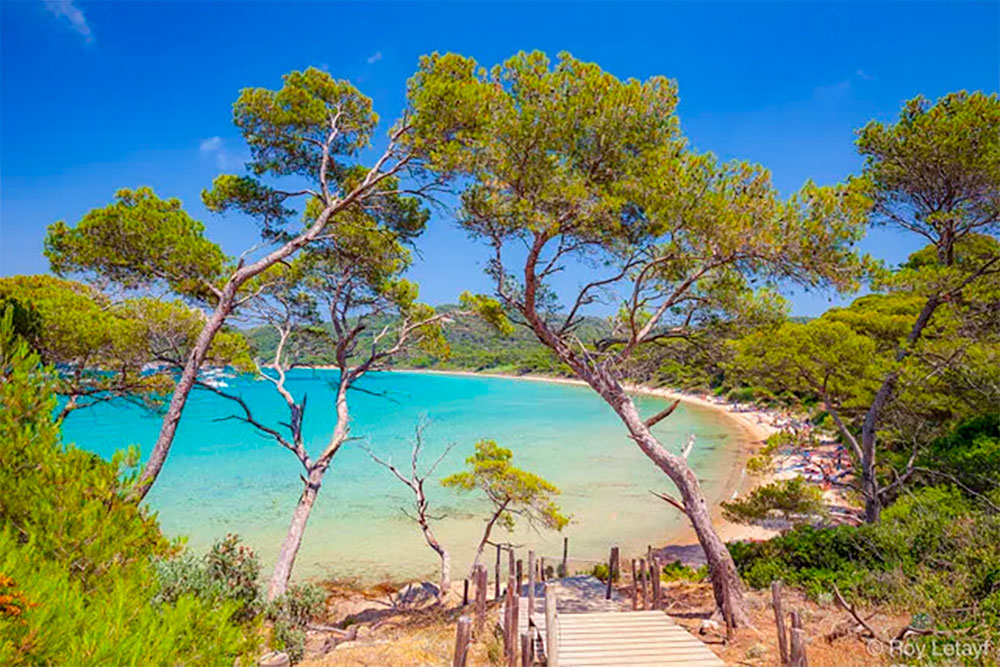
8. Calanque d’En-Vau, Cassis
Calanque d’En-Vau is one of the most spectacular beaches in southern France, located in the heart of the Calanques National Park between Marseille and Cassis. This narrow limestone inlet is flanked by towering white cliffs, with turquoise waters at the base. The beach is composed of small white pebbles and is accessible only by foot (a challenging 1.5 to 2-hour hike from Cassis) or by kayak or boat. The effort is worth it—upon arrival, you’re greeted with stunning alpine-meets-coastal scenery and clean, sheltered water ideal for swimming. There are no services or lifeguards, so visitors must come prepared with water, food, and sun protection. Because of its remote nature, En-Vau remains uncrowded compared to more accessible beaches. Early morning or late afternoon visits are recommended to avoid intense heat and to catch dramatic lighting on the cliffs. This is not a beach for casual visitors, but for experienced hikers or adventurers looking for a truly wild Mediterranean cove, it is one of the best.
9. Plage de Carras, Nice
Plage de Carras is one of the only sandy beaches in the city of Nice, located on the western edge of the Promenade des Anglais. Unlike most of Nice’s pebbly beaches, Carras features soft imported sand in sections, making it more comfortable for families and beach sports. It’s fully equipped with lifeguards (in season), restrooms, showers, and facilities for disabled access. There’s also a designated area for jet skiing, paddleboarding, and beach volleyball. Easily reachable by bus or tram from central Nice, Carras is the city’s official “sports beach” and often hosts events and summer activities. The beach is split into public and private sections, with nearby kiosks offering snacks and drinks. It’s less stylish than beaches in Villefranche or Antibes but compensates with convenience and a wide range of services. Parking is available, though it fills up quickly. For those staying in Nice and seeking a relaxed beach day without traveling far, Carras offers a balanced and practical seaside option.
10. Plage de la Garoupe, Cap d’Antibes
Located on the eastern side of Cap d’Antibes, Plage de la Garoupe is a small, elegant beach once frequented by literary legends like F. Scott Fitzgerald and Ernest Hemingway. The beach is a mix of soft sand and pebbles, with gentle waves and shallow waters ideal for swimming. It includes both public and private areas, with several high-end beach clubs offering sunbeds, fresh seafood, and cocktails. The bay is protected from strong currents, making it a favorite among families. Access is easy via local roads, and some parking is available nearby, though it is limited. A coastal walking path starts here, giving access to scenic views and hidden coves. The beach can get crowded in high season, but early mornings and late afternoons are usually calm. Its history, intimacy, and picturesque setting make La Garoupe a standout destination on the Cap. Though small, it delivers a refined Riviera experience without the flashiness of Saint-Tropez.
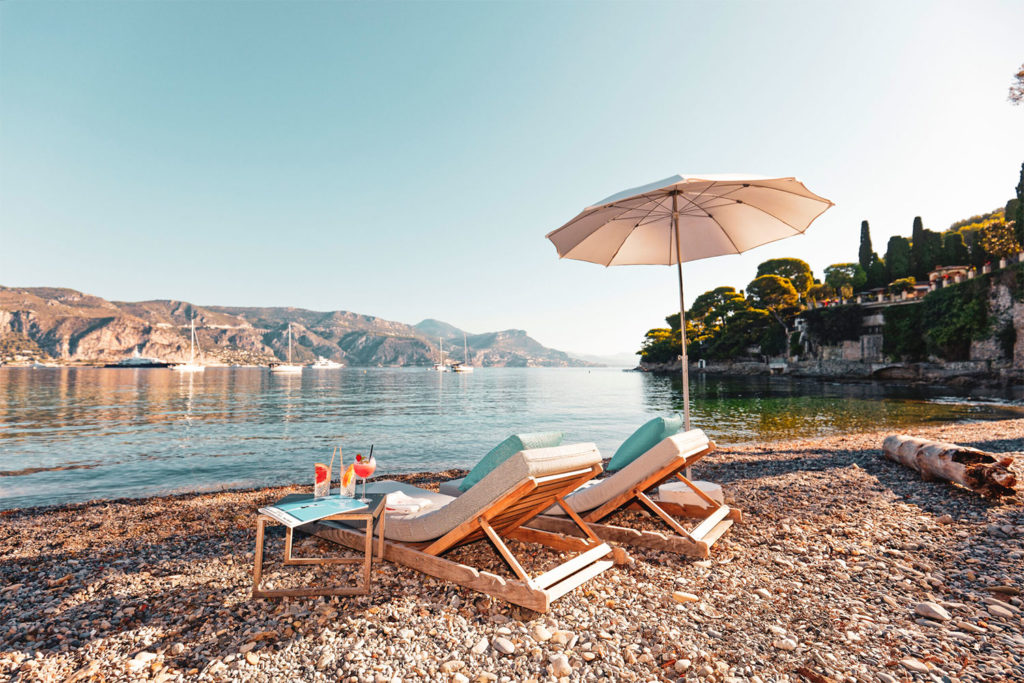
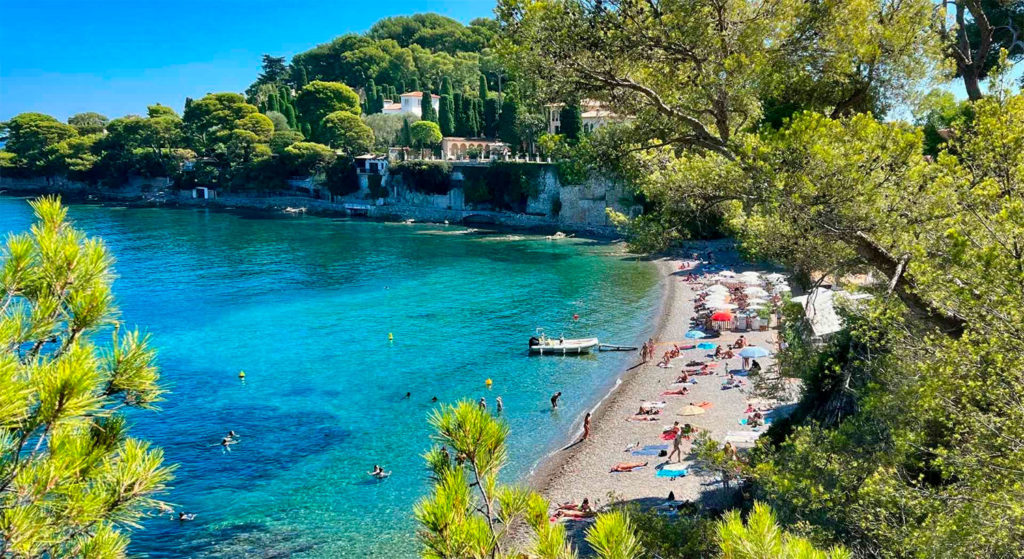
11. Paloma Beach, Saint-Jean-Cap-Ferrat
Paloma Beach is a prestigious cove located on the eastern side of the Saint-Jean-Cap-Ferrat peninsula. Named after Paloma Picasso, it has long been a favorite among artists and celebrities. The beach combines public access with a private beach club, where guests can rent loungers and enjoy table service. Surrounded by forested hills and Mediterranean villas, it offers a sense of peaceful seclusion despite being just a 30-minute drive from Nice. The beach is primarily pebbly, and the waters are calm and clear, ideal for paddleboarding, snorkeling, or simply swimming. The views stretch toward the cliffs of Beaulieu-sur-Mer and Eze, making this an incredibly photogenic location. Access is possible via a coastal path or through narrow local roads; parking is limited, so arriving early is recommended. The Sentier du Littoral trail begins nearby and offers beautiful walking options. Paloma Beach is particularly appealing in the shoulder seasons when crowds are thinner, and the sea is still warm. With its calm waters and refined ambiance, it’s one of the most elegant beach settings on the Riviera.
12. Plage de la Croisette, Cannes
Plage de la Croisette runs alongside Cannes’ most famous boulevard and embodies the glamour of the Côte d’Azur. Lined with luxury hotels like the Carlton and the Martinez, the beach includes a combination of private beach clubs and smaller public areas. The sand here is soft and golden—unlike Nice’s pebbly stretches—making it comfortable for sunbathers. The beach is wide and well-maintained, with lifeguards during summer months and access ramps for strollers and wheelchairs. Visitors can enjoy water sports such as paddleboarding or parasailing, or dine at one of the many beach restaurants offering Mediterranean cuisine. The Cannes Film Festival, held each May, brings a wave of celebrities and media to the promenade just steps from the sand. The location is walkable from the main train station and easily accessible by car, though traffic can be heavy during peak season. With its central location, elegant vibe, and full range of services, Plage de la Croisette is perfect for those seeking comfort and style by the sea.
13. Plage du Suveret, Théoule-sur-Mer
Plage du Suveret is a quiet and scenic beach located in the small resort town of Théoule-sur-Mer, just southwest of Cannes. Sheltered below the dramatic red rocks of the Esterel Massif, the beach combines coarse sand and smooth pebbles, offering clear waters perfect for snorkeling and swimming. The views here are particularly striking, with green hills descending directly into the sea and yachts anchored offshore. Restaurants along the waterfront serve fresh seafood, and a few beach clubs offer parasols and loungers. The beach is less crowded than those in Cannes or Antibes, making it ideal for a peaceful day trip. It’s accessible by train—Théoule-sur-Mer station is just a 10-minute walk away—or by car, although parking is limited in summer. Popular with both locals and in-the-know visitors, Suveret remains under the radar while offering a full Riviera experience in a more relaxed setting. It’s a good choice for couples and travelers seeking an uncrowded beach with natural charm and good dining options.
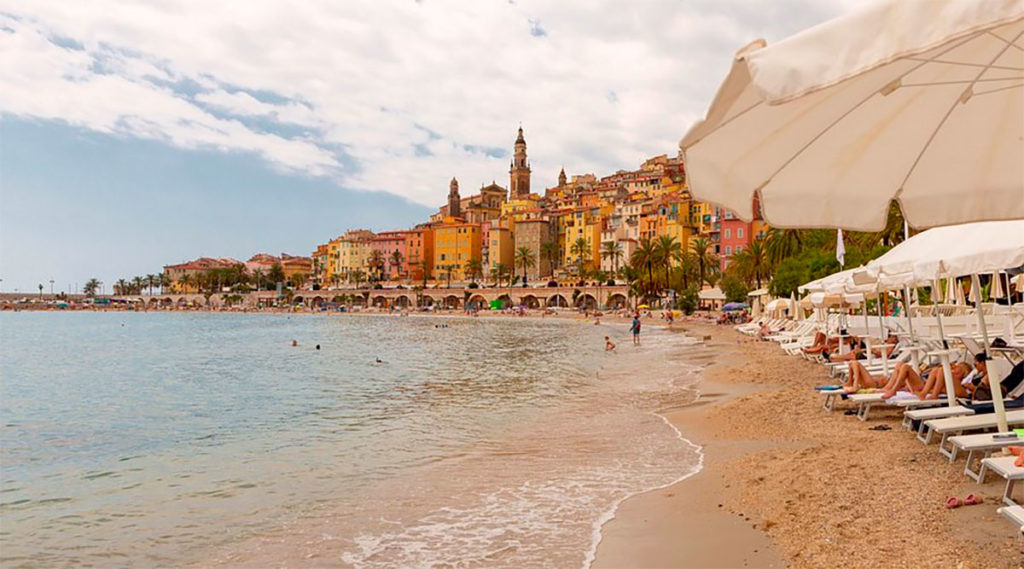
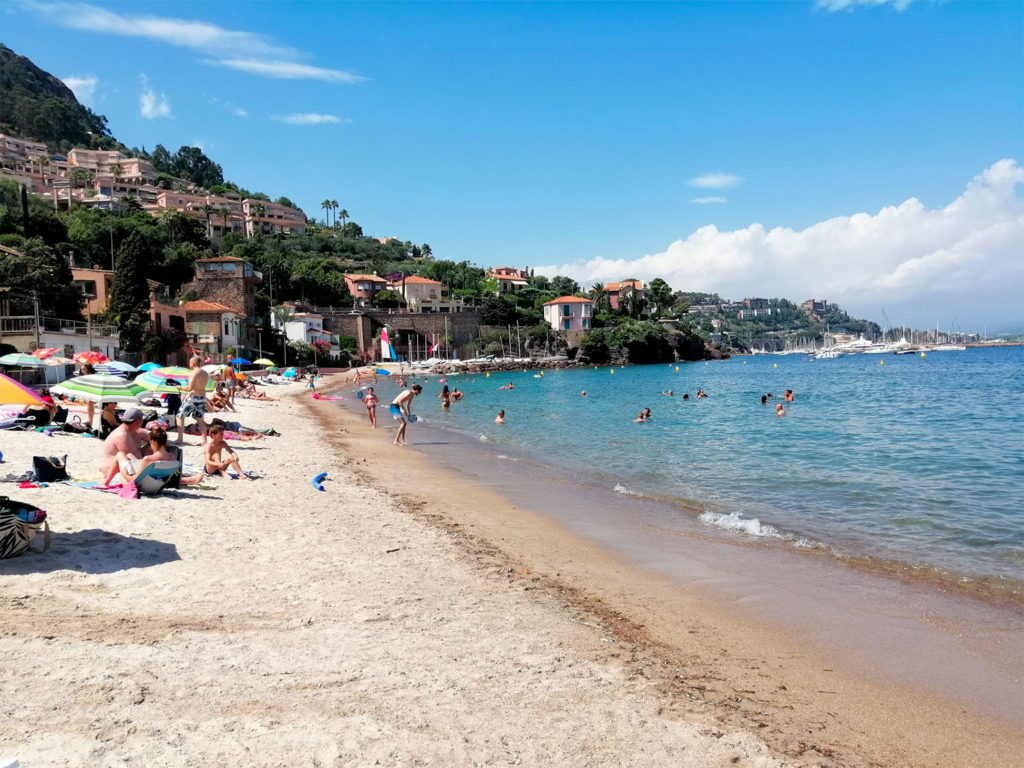
14. Sablettes Beach, Menton
Sablettes Beach is located in Menton, near the Italian border, and offers a family-friendly setting with scenic views of the pastel-colored old town and the Maritime Alps. The beach is a mix of sand and fine gravel, with calm, shallow waters that make it safe for children and beginner swimmers. It lies just steps from the city’s historic center and is easily accessible on foot from the train station. The promenade behind the beach features restaurants, cafés, and gelato shops, offering convenient options for lunch or refreshments. Sablettes also includes a small playground and shaded benches, making it ideal for families spending a full day. Lifeguards are present during the summer season, and water sports like kayaking and paddleboarding are available. The beach is clean and well-maintained, and its position facing east means it gets morning sun and cooler afternoons, which can be pleasant in peak heat. Less busy than nearby Nice or Monaco, Sablettes Beach offers a blend of urban comfort and coastal charm, ideal for a calm, cultural beach experience.
15. Calanque de Port-Pin, Cassis
Calanque de Port-Pin is one of the most accessible inlets in the Calanques National Park, located between Marseille and Cassis. It is reachable via a 45-minute coastal hike from the Port-Miou parking area. Unlike the dramatic cliffs of En-Vau, Port-Pin has gentler rock formations and small pine trees growing right down to the sea—hence its name. The beach consists of pebbles and rocky shelves, with some sandy areas ideal for laying towels. Its clear, shallow water makes it a favorite among families and casual swimmers. There are no shops or restrooms, so visitors should bring food, water, and sun protection. Early morning and weekday visits are recommended to avoid crowds. Because of the easy trail and stunning turquoise water, Port-Pin is often busy in summer but less so than urban beaches. The site is part of a protected zone, so visitors are asked to leave no waste and stay on marked trails. With its natural setting and beautiful views, Port-Pin offers a more accessible alternative to the wilder Calanques nearby.
16. Plage De L’Escalet, Ramatuelle
Plage de L’Escalet is a lesser-known beach near Ramatuelle, south of Saint-Tropez. It sits between Cap Camarat and Cap Taillat, offering a blend of sandy coves and rocky outcrops. The beach is popular among snorkelers and kayakers due to its clear waters and nearby inlets. It’s quieter than the famous Pampelonne Beach, making it a favorite for those seeking a more natural, low-key setting. There’s a paid parking area within walking distance, and the beach is accessible via a short path through coastal vegetation. While the main area has small pebbles and sand, further along the coast are rockier coves ideal for those wanting more privacy. There are no restaurants directly on the beach, but food trucks and mobile kiosks sometimes operate in high season. Lifeguards are present during the summer months, and the beach is family-friendly with calm waters. Hiking trails around Cap Taillat also make it popular with walkers. L’Escalet combines outdoor adventure with a relaxed beach experience, offering a scenic escape without the high-profile atmosphere of nearby Saint-Tropez.
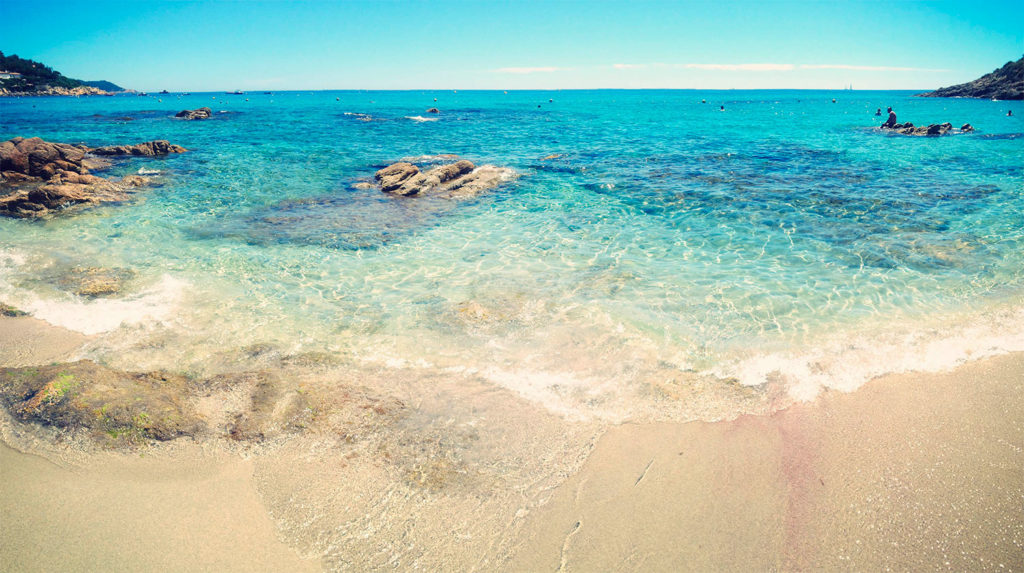
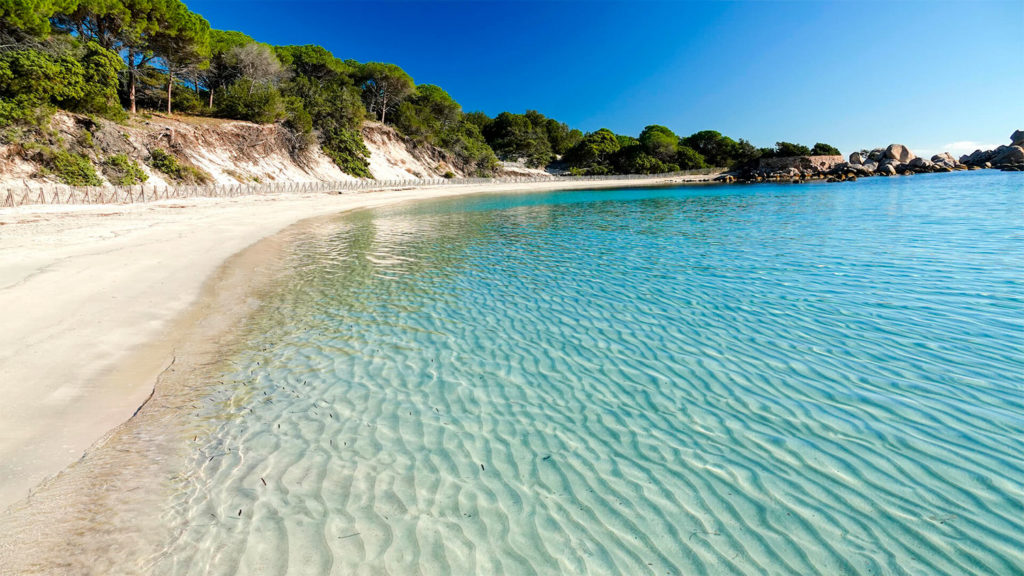
17. Plage de Tamaricciu, Porto-Vecchio, Corsica
Situated just south of Palombaggia, Plage de Tamaricciu is a pristine beach in Porto-Vecchio, Corsica, known for its soft white sand, transparent waters, and striking granite formations. One of its defining features is a solitary pine tree growing on a small rock at the water’s edge, often photographed as a symbol of Corsican beaches. Tamaricciu is quieter than its neighbor Palombaggia, though equally beautiful. Access is by a short dirt road and footpath from a nearby parking area. The beach is partially equipped with sunbeds and a few seasonal snack bars but retains a largely natural feel. It is ideal for swimming, snorkeling, and lounging under the shade of pine trees. The shallow entry into the sea makes it suitable for families with children. As part of a protected coastal zone, construction is limited, ensuring minimal visual impact and clean conditions. Tamaricciu appeals to travelers looking for a serene and photogenic beach without sacrificing accessibility or water quality, and it is best visited in the early hours or late afternoon to avoid midday crowds.
18. Plage Fe Saleccia, Corsica
Located in northern Corsica, Plage de Saleccia is one of the island’s most remote and untouched beaches. It stretches for over a kilometer with dazzling white sand and shallow, turquoise waters. Unlike the better-known beaches near Porto-Vecchio, Saleccia is only accessible by boat, 4×4 vehicle, or a long hike through the Desert des Agriates. The effort to reach it ensures a tranquil experience, especially outside peak summer weeks. There are no permanent facilities—only a seasonal snack hut—so visitors must bring their own supplies. Anchored boats often line the bay, but the beach rarely feels crowded. Saleccia is a favorite among campers and day-trippers seeking an unspoiled natural landscape. Pine trees fringe the sand, offering patches of shade, and the water remains shallow and warm well into autumn. Turtles, sea birds, and rare vegetation contribute to its ecological importance. It is best visited via a boat taxi from Saint-Florent, which takes about 30 minutes. Saleccia is ideal for travelers willing to venture off the beaten path for a truly wild Mediterranean experience.
19. Prado Beaches, Marseille
Plages du Prado are Marseille’s main urban beaches, located in the southern part of the city, stretching over several kilometers of coastline developed in the 1970s using reclaimed land. The area includes multiple beaches, from sandy stretches to pebble-covered zones, each catering to different crowds—families, teens, and sports enthusiasts. Facilities are excellent: lifeguards, public restrooms, playgrounds, snack bars, volleyball courts, and accessible ramps are all available. Prado is particularly popular for windsurfing and kitesurfing due to favorable breezes. These beaches are easily accessible by bus from central Marseille (roughly 20 minutes) and offer plenty of parking. Though urban, the sea quality is regularly monitored and generally clean, especially near Plage Borély. The promenade behind the beaches hosts events, open-air concerts, and skateparks. While it lacks the natural charm of the Calanques, Prado compensates with its vibrant atmosphere and convenience. It is perfect for families, budget travelers, and those looking for a quick dip without leaving the city. Best visited on weekdays for fewer crowds, it remains Marseille’s most democratic and functional beach zone.
XperienceFrance is your travel specialist in France.
